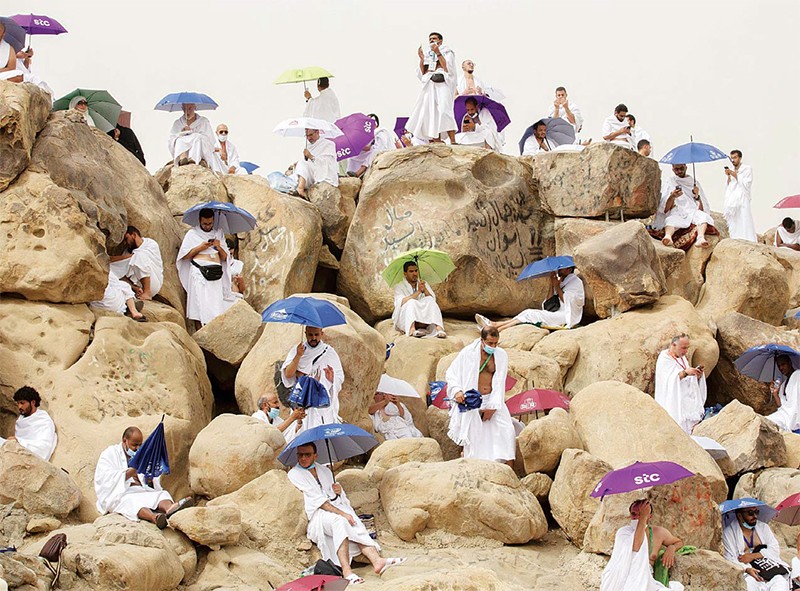19/07/2021
19/07/2021
RIYADH, July 19: Pilgrims began ascending the plains of Mount Arafat since Monday morning for the second day of Hajj. Standing on Mount Arafat until the sunset on the 9th day of Dhul Hijjah is the most important ritual of the Hajj. Pilgrims converge on the hill, dedicated to prayers and reflection, where Dhuhr and Asr prayers are prayed together. Saudi Press Agency said security personnel accompanied the pilgrims and directed them to Mount Arafat The security personnel surrounded routes and pedestrian paths to organize movement of the pilgrims according to plans that guarantee their safety, the news agency explained.

All government sectors working to serve pilgrims provided necessary medical, ambulance, and catering services in all parts of the Arafat area, SPA added. After standing on Arafat, from sunrise to sunset, pilgrims head to the site of Muzdalifa to spend the night, as per Hajj obligations. Muzadlifda is the area for performing Jamarat, the symbolic stoning of the devil. Saudi Arabia has tapped information technology and artificial intelligence to organize Hajj (pilgrimage) and offer services to pilgrims amid the coronavirus pandemic.
The Saudi Ministry of Hajj and Umrah used modern technology to limit human contact during the rituals to ensure safety of pilgrims. Starting from registration, the ministry launched a portal to receive and process to Hajj applications. It issued this year smart cards for all pilgrims. The cards record all personal and health information about pilgrims and give them access to camps, transport, hotels, and other amenities. The cards can also be used for electronic payment and helping authorities identify crowed areas at the holy sites in Makkah and Madinah. The ministry also deployed robots to sanitize holy sites, monitor pilgrims and service providers’ abidance by coronavirus preventive measures, mainly wearing masks and keeping distancing. It also employed other robots with interactive screens and speakers to provide religious guidance to pilgrims and to respond to questions of about rituals. (KUNA)


